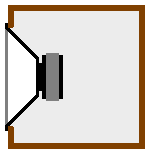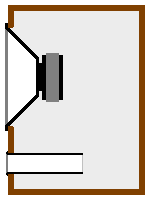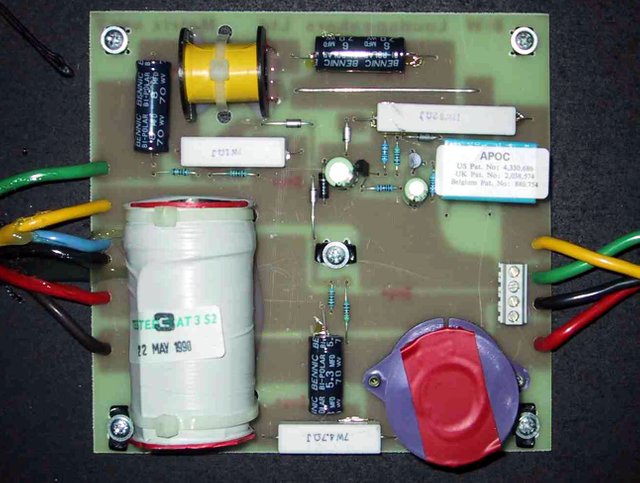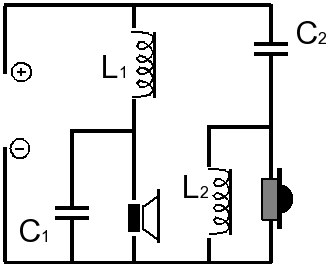Hey, this is only a small introduction to the basics of diy speaker building, and not a guide that goes into detail. But anyway, i hope that you maybe learn something new or get as interested in diy speaker building as i am while reading this.
The drivers
The drivers are always the most important components of a speaker, because they produce the sound. Most commonly today are two and three-way speaker system (two way = two drivers, three way = three drivers). But why don’t we use just one driver? Well, it’s not that easy to answer this question. To understand why more than one driver is necessary you firstly need to understand what “Sound” is. In general sound is the vibration of the air around you. The air begins to vibrate because the driver moves back and forth.

But as you might know, the human ear can only hear vibrations for 20 hertz up to round about 20.000 hertz. And because of this limitation, normal speakers are designed to reproduce only this frequency spectrum. For a single driver it’s nearly impossible to reproduce this complete spectrum in a perfect way, so the sound is divided to the different drivers.
In a two-way system there is a woofer and a tweeter, the woofer produces the low frequencies up to 1500 – 3000 hertz, and the tweeter reproduces all the frequencies above this point. In the three-way system the frequencies are even further divided, a third driver is used to reproduce the mids, which is normally referred to as the mid-range/mid-bass driver.
There are also full-range drivers, which claim to reproduce the whole frequency spectrum, but in my opinion, they only do okay at all frequencies, but aren’t outstanding at any. I think that if you take a great woofer and a great tweeter they overall perform better.
The enclosure
The obvious reason to have an enclosure is to mount the drivers in the right place, but that’s not the most important reason. To reproduce the above-mentioned frequencies a woofer needs to be mounted in a box, because the compliance of the air inside the box helps the driver to work efficiently. With the size/type of the enclosure, the response of the low frequencies can be shaped.
In general, there are 3 different types of enclosures, the first and simplest one is the closed box, which, as the name already suggests is closed, so there are only the drivers and no additional passive radiators or vents. A closed box should not resonate (resonance is the ability to amplify/decrease certain frequencies).

A vented box (or ported box) has one or more vents which form a connection of the air around the speaker and the air inside the speaker. Vented enclosures are designed to resonate at a certain frequency. This frequency is often referred to as the tuning frequency, which can be modified by changing the number, the length or the size of the vent.

The third and today most uncommon type is a passively radiated box. In addition to the woofer, a passive radiator is mounted next to it. A passive radiator is like a woofer without a motor, the diaphragm is allowed to move freely. The mass of the diaphragm can be changed, in order to change the resonance frequency of the box.

Besides these three main types, there is also the possibility to mount the driver open baffle, which means that there is no box, the driver is just mounted in, for example, a piece of wood, and the back is open.

The crossover
In a speaker the crossover is used to divide the frequencies to the drivers. In the example of a two-way system the full spectrum is amplified by an amplifier, and the crossover sends only the frequencies below the crossover-point of 3000 hertz to the woofer and the frequencies above to the tweeter. After the signal is amplified, only passive components like resistors, capacitors and inductors are used to form the crossover. Besides the drivers, the crossover has the most impact on the sound of a speaker and is often used to compensate problem of the drivers.

This is a simplified circuit diagram of a crossover

Nice explanation of speaker set up. Thanks!
Downvoting a post can decrease pending rewards and make it less visible. Common reasons:
Submit
really appreciate you upvote, thanks
Downvoting a post can decrease pending rewards and make it less visible. Common reasons:
Submit
A nice description, keep going! :3
Downvoting a post can decrease pending rewards and make it less visible. Common reasons:
Submit